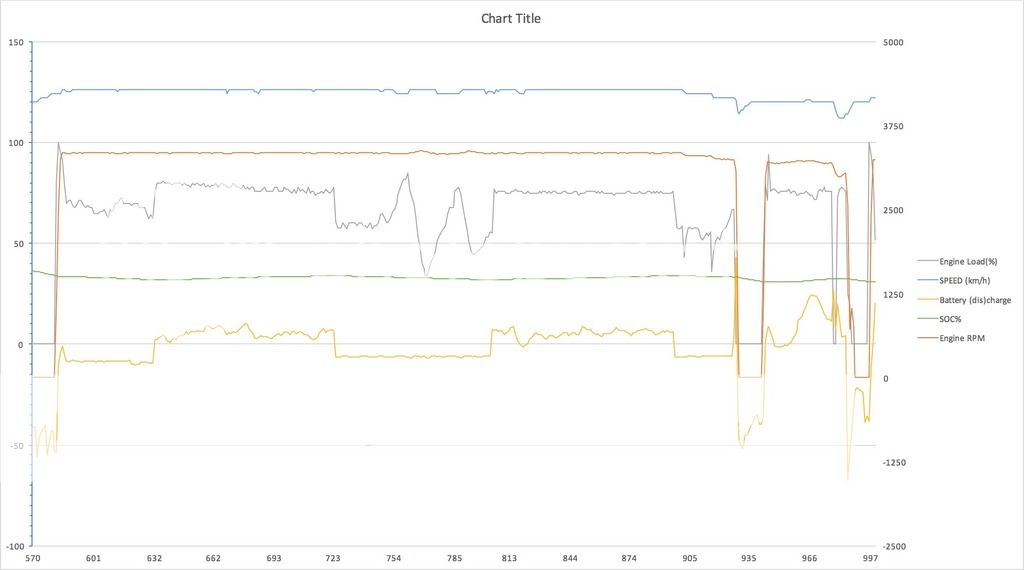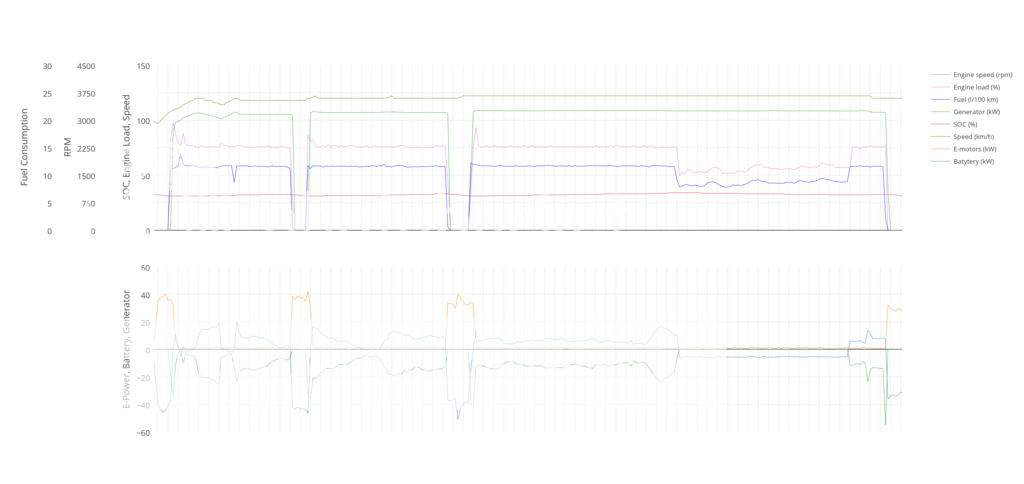Yes. They do. How am I so sure? Well, how could they not?

Let me give an interpretation (mine) of this graph, based upon other observations I have made and try to predict what will happen when there is more wind or an incline.
The top orange line shows that the engine is running all the time, at an RPM directly linked to the speed. Where you normally would expect the engine to stop every know and then, this doesn't happen here.
Where the engine power (grey line) is low, the car runs in pure parallel mode (without any E-component, if you must believe the indicators on the dashboard), but in reality a small amount of E-power (increases and decreases with speed, but about 4 - 6 kW @ 100 km/h) is used to:
- generate a very small amount of torque in the rear E-motor, to maintain the 4WD character of the car
- eliminate E-drag on the front E-motor
This power does not come from the generator (even though it is spinning happily along with the engine), but from the battery. See the bottom yellow line, which shows power (kW) going into (positive) or out of (negative) the battery. I even suspect that the battery is providing some power to eliminate E-drag in the generator.
You can see SOC (green line) going down a bit during this phase. Then, when SOC reaches the low water mark, the engine steps up to 75% (most efficient, sweet spot) to up the SOC back to the high water mark of the cycle. At these times, I think a blue arrow from engine to battery id shown in the dash. And so on.
You see similar differences as when you compare charing with low SOC to charging with high SOC. With low SOC / when the battery is being recharged, the engine load is fairly constant at 75% and the charge current is used to accommodate to changes in driving conditions. With high SOC / when engine is being discharged, engine load varies to accommodate to changes in driving conditions.
Now you get a head wind or encounter an incline. Think this is what will happen:
During the discharge phase of the cycle, the discharge rate will stay the same, but the engine will work harder to accommodate for the more demanding driving conditions. Once conditions require > 100% engine power, the battery will start to discharge faster, as the E-motors must support the engine. At that moment you have an orange arrow from engine to wheels and a blue arrow from battery to wheels.
During the charge phase of the cycle, charging will be reduced to accommodate for increasing demand, but engine load stays at 75% as long as possible. When demand increase further, the engine will start to work harder and charging stops completely. Blue arrow from engine to battery dims. Once the engine is at 100%, the battery starts to discharge again. Blue arrow from battery to wheels appear.































